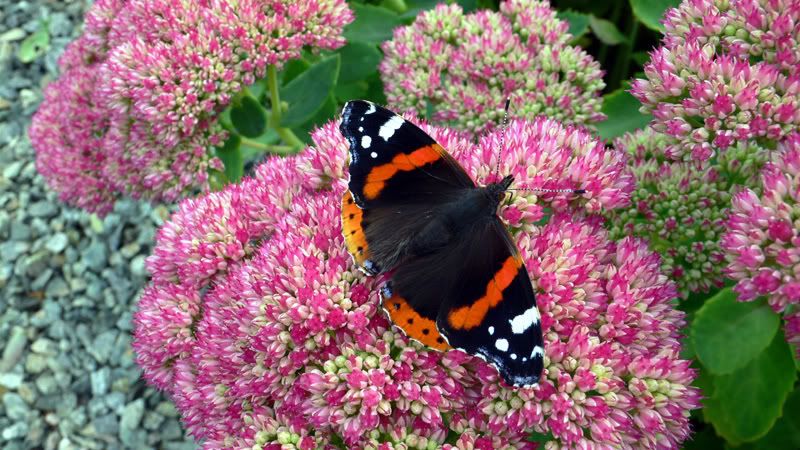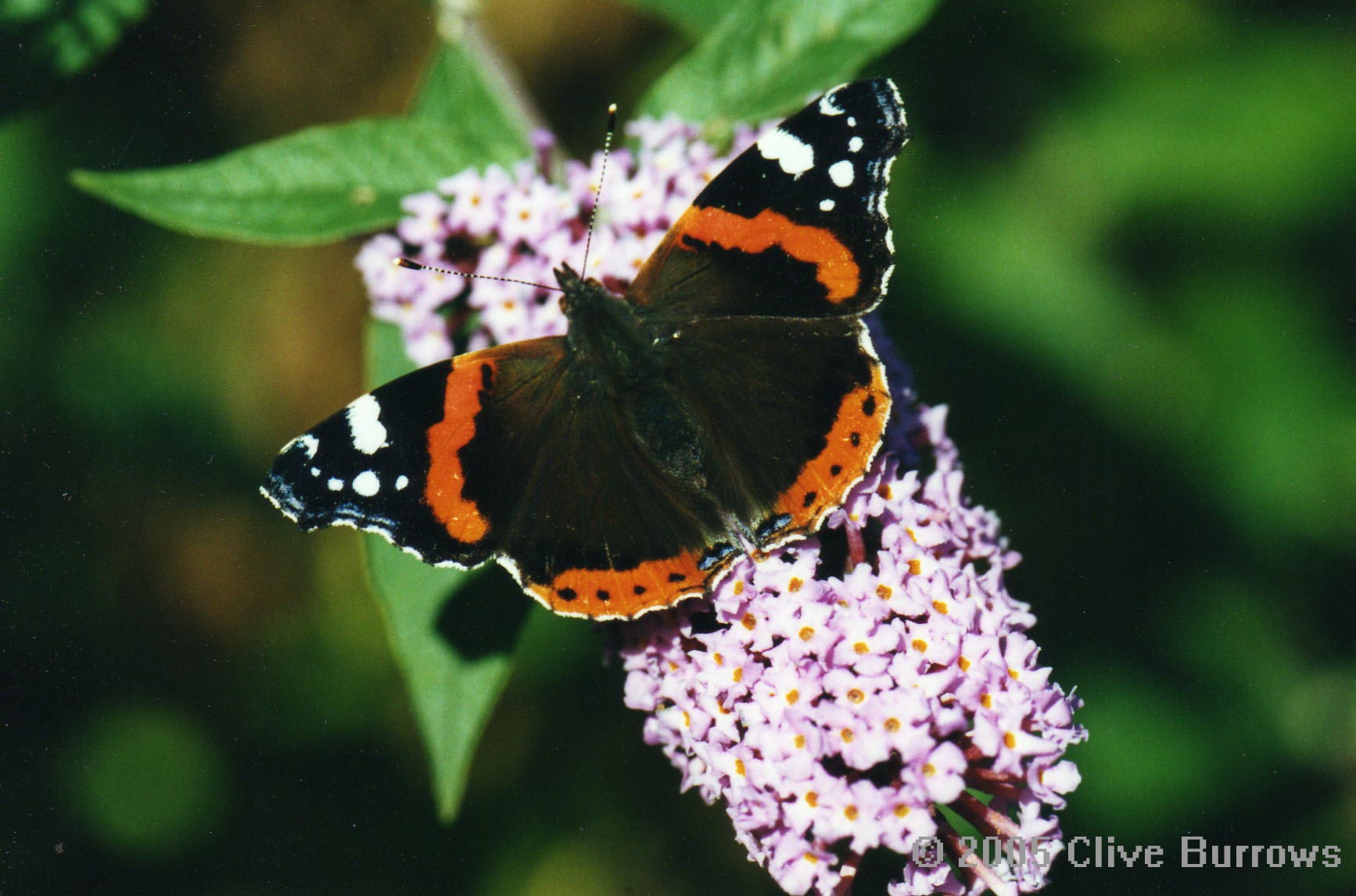Troll Kingdom
You are using an out of date browser. It may not display this or other websites correctly.
You should upgrade or use an alternative browser.
You should upgrade or use an alternative browser.
THE RED ADMIRAL, ILLUSTRATIVE NATURAL HISTORY OF
- Thread starter Grammour Boy
- Start date
More options
Who Replied?Grammour Boy
Rebel
Regular migrant
This familiar and distinctive insect may be found anywhere in Britain and Ireland and in all habitat types.
Starting each spring and continuing through the summer there are northward migrations, which are variable in extent and timing, from North Africa and continental Europe. The immigrant females lay eggs and consequently there is an emergence of fresh butterflies, from about July onwards. They continue flying into October or November and are typically seen nectaring on garden buddleias or flowering Ivy and on rotting fruit.
There is an indication that numbers have increased in recent years and that overwintering has occurred in the far south of England.
Conservation status
UK BAP status: not assessed
Butterfly Conservation priority: not assessed
European threat status: not assessed
European/world range
From North America across central and southern Europe and Asia to Iran, and Africa north of the Sahara. In western Europe it is a widespread and sometimes common resident from the Mediterranean north at least to central Germany where it overwinters in most years.
Foodplants
In Britain and Ireland the most important and widely available larval foodplant is Common Nettle (Urtica dioica). However Small Nettle (U. urens) and the related species, Pellitory-of-the-wall (Parietaria judaica) and Hop (Humulus lupulus) may also be used.
Habitat
This strong-flying migratory species may be seen throughout Britain and Ireland and in almost any habitat, from sea-shore to town centres and the tops of mountains.
In spring, each newly arrived male defends its chosen territory vigorously. These territories are situated initially close to the south coast, then further inland and typically on bushy hillsides, in corners of sheltered gardens, or in sunny clearings in woodland or parkland, and may be held for a week or more if conditions are suitable for flight. Females are usually seen near nettle beds except when nectaring.
Later in the season, any flower-rich habitat is likely to attract the butterfly, including gardens where buddleias, stonecrops, and Michaelmas-daisies are all popular with Red Admirals. They also favour orchards where fruit is rotting on the ground.
Grammour Boy
Rebel
The pursuit of Knowledge is nary a waste of time, dear friend!
(And I'm using the term "friend" very loosely here.) :razz:
(And I'm using the term "friend" very loosely here.) :razz:
Grammour Boy
Rebel

FIGURE 1. Fancy flier — the red admiral, Vanessa atalanta.
Aerodynamics: Red Admiral Agility
Rafa Zbikowski
Department of Aerospace,
Power and Sensors, Cranfield University,
Royal Military College of Science, Shrivenham, Swindon, UK.
Our understanding of insect flight is hampered by the difficulty of obtaining data when the insects are flying freely. But such experiments can be carried out and show butterflies to be masters of flight control.
Over the past ten years there has been much progress in understanding insect flight1, 2, 3. The news keeps coming, and the latest instalment appears on page 660 of this issue4, where Srygley and Thomas describe aerodynamic observations made on free-flying red admiral butterflies. By injecting wisps of smoke into a wind tunnel, through which the butterflies flew towards an artificial flower, the authors were able to record airflow features around the wings using high-speed cameras. From the ensuing analysis, they conclude that the butterflies possess an impressive repertoire of aerodynamic mechanisms, which they employ in different circumstances and with great virtuosity.
We evidently still have much to learn about insect flight, which has been refined over an evolutionary history of 300 million years or more5. There are plenty of reasons for such studies. This is a subject of fundamental importance in biomechanics6, and more generally in biology, because of the abundance and ubiquity of insects, and their importance in many ecosystems7.
Insects are also masters of manoeuvrability at low speeds, in hovering and flying backwards and sideways, skills that are of great interest to engineers in two respects. One is the lessons to be learned in designing flapping-wing 'micro air vehicles' (defined as being no more than 15 centimetres in length, width or height). Another is the prospect of reverse-engineering insect flight control, by finding out how insects steer in the air. Man-made flying vehicles are controlled by software commands, but the software design requires many man-years of work and powerful computer chips for its implementation. By contrast, in flies for instance, flight control probably originates from a central complex in the fly brain consisting of about 3,000 neurons8. This gives the insect less computational power than a toaster, yet insects are more agile than aircraft equipped with superfast digital electronics.
Understanding of insect aerodynamics has to start with the wing-beat cycle of alternating downstroke and upstroke. At the beginning of the downstroke, the wing (as seen from the front of the insect) is in the uppermost and rearmost position, with the leading edge pointing forwards. The wing is then pushed downwards and forwards and rotated continuously, so that the angle of attack changes considerably during this downward motion. At the end of the downstroke, the wing is twisted rapidly, so that the leading edge points backwards, and the upstroke begins. During the upstroke, the wing is pushed upwards and backwards and rotated again, which changes the angle of attack throughout this motion. At the highest point, the wing is twisted again, so that the leading edge points forward and the next downstroke begins. So the wing is never in steady motion: it stops twice in each wing-beat cycle, and accelerates and decelerates between the stroke reversals. The resulting airflow varies considerably in time, but exhibits no turbulence (that is, it is laminar). This 'unsteady action' was first elucidated by Weis-Fogh9 and decisively demonstrated by Ellington10.
Weis-Fogh discovered the 'clap-and-fling' mechanism, in which the wings touch each other (clap) and then separate rapidly (fling), producing a short-lived inflow of air as vortices, which provide extra lift. Butterflies and certain wasps use clap-and-fling, but other insects do not, presumably because of the wing bashing involved with this technique. Instead, they increase lift by generating a leading-edge vortex (LEV)1, 2, which persists during each wing stroke and is shed at the end of it. In this process, a large vortical structure is created along the leading edge of the wing, where it persists despite the wing's acceleration and deceleration during each stroke or half-cycle.
Insects combine use of the LEV with exploitation of the wake shed from a wing's trailing edge — that is, the sheets of vortices that are left behind or, in hovering, are pushed downwards. In the hover, the wing retraces its path during each half-cycle. So it enters the air disturbed by its own wake, a phenomenon known as wake capture. In this way, insects may recycle the momentum of the wake to improve lift, so using a subtle energy-saving strategy6.
The principle of LEV has been applied in fixed-wing aircraft11, and unsteady wakes arise in helicopter flight12. Consequently, the observations of the aerodynamics involved, especially those of hovering, are amenable to mathematical modelling3. But data on flying organisms have been obtained only from tethered insects or electromechanical wing models. Tethered flight, in which an insect is glued to a metal rod and made to fly artificially, is clearly unnatural. Scaled models are experimentally more convenient. But the relevant kinematics are only approximations, and the models lack an elastic wing response and (obviously) do not respond to stimuli such as visual cues.
The problem, of course, is that free-flight data on insects are fiendishly difficult to obtain: the animals are tiny, their wings beat rapidly and techniques that do not impede movement are required. Getting detailed yet accurate quantitative data remains out of reach. But Srygley and Thomas4 show that, despite all the difficulties, valuable qualitative experiments can be carried out.
This is not the first time free-flight information has been gathered (it's been done with dragonflies13). Rather, the novelty of Srygley and Thomas's work lies in their imaging and assessment of the gross features of the airflow around their butterflies. They then interpret these features by seeking flow patterns among the smoke streamlines, using an approach known as critical point theory. This theory has a stock of typical mathematical patterns, each with known properties. If any of these patterns can be spotted in the smoke visualization images, inferences can be made about the aerodynamics involved.
For example, Srygley and Thomas could find no discernible spanwise flow (that is, air flow from wing base to tip) inside the LEV in red admirals; such a flow occurs strongly in the Manduca hawkmoth1 but weakly in fruitflies2. And they observe the existence of two parallel LEVs when a butterfly accelerates, but none at all when it flies forward steadily. This would suggest that the double vortices are a 'high lift' device used when rapid motion is required. Overall, however, the most remarkable finding is that red admirals (Fig. 1) seem to employ all the known lift-generating mechanisms in flight: clap-and-fling, LEVs, wake capture and rotational lift (this last is akin to the extra lift conferred on a tennis ball by spin). The butterflies appear to switch effortlessly among these mechanisms from stroke to stroke.
Disadvantages of this type of visualization experiment are that the smoke obscures three-dimensional structures in the airflow, and the smoke streamlines become smudged. Moreover, the pattern-spotting device is the observer's eye, so interpretations are not rigorously objective. Nonetheless, Srygley and Thomas's skilful work has revealed the aeronautical versatility of the red admiral.
Butterflies are the preferred diet of some insect-eating birds, and highly manoeuvrable flight may be essential to avoid becoming easy prey5. The new work provides indirect support for that view. It also leaves one wondering how, with such a small brain, insects exercise flight control over such a wide range of aerobatic abilities. If engineers ever understand that, there will be a revolution in aeronautics.
Reference: Nature, 420(6916):615, 617-8, 2002.
Grammour Boy
Rebel
What does this stuff have to do with the thread topic. the red admiral?
I thought Speak Sanely was a Spam-Free Zone. Am I mistaken?
:razz:
I thought Speak Sanely was a Spam-Free Zone. Am I mistaken?
:razz:
Grammour Boy
Rebel
^^ That's a nice collection. The other stuff is off-topic, however.Gagh said:
:razz:
Gagh
Χριστόφορος
Grammour Boy said:What does this stuff have to do with the thread topic. the red admiral?
I thought Speak Sanely was a Spam-Free Zone. Am I mistaken?
:razz:
What are you on about?








